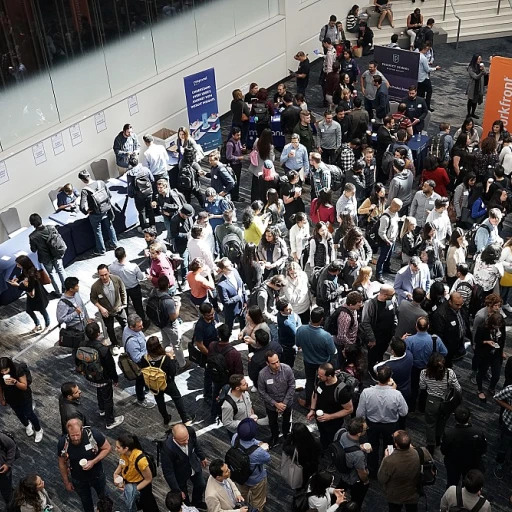Understanding Generative AI and Its Role in Prototyping
Decoding the Power of Generative AI in Prototyping
Generative AI has swiftly become a driving force in revolutionizing the prototyping process, offering a transformative approach to product design and development. Unlike traditional methods, generative AI assists designers and developers in creating prototypes more efficiently and innovatively. The concept of generative AI is deeply rooted in advancements in artificial intelligence and machine learning. These technologies enhance the capability to generate new ideas and designs by analyzing vast amounts of data. In the realm of product prototyping, this means images, text, and designs can be produced in real-time, providing dynamic solutions that streamline the design process. When designers leverage generative AI tools, they gain access to a vast repository of design possibilities. These tools facilitate the creation of prototypes by processing data inputs and generating multiple design iterations. This iterative approach not only speeds up the design life cycle but also encourages experimentation with innovative concepts. For product development teams, generative AI serves as a prototype generator, allowing them to focus more on refining and perfecting their ideas. By offering diverse design prototypes, teams can evaluate different approaches swiftly and select the most viable options. Additionally, generative AI improves the overall user experience by enabling more personalized and adaptive product designs. As developers interact with these tools, they're not only able to generate more compelling designs but also optimize their time and resources more effectively. To understand how generative AI and its role in prototyping align with the future of job roles in AI environments, explore more about emerging careers with AI on our blog.Benefits of Using Generative AI in Product Development
Unlocking Efficiency and Speed in Design Prototyping
Generative AI presents numerous advantages in product development, particularly when it comes to the design and prototyping stages. By leveraging advanced algorithms and machine learning, designers can streamline the creation of product designs, significantly reducing the time required to move from idea to prototype. One of the key benefits is the ability to generate a multitude of design iterations quickly. Tools equipped with generative capabilities can create diverse design prototypes, enabling designers to explore a broader range of ideas and options. This flexibility leads to a more robust development process as products can be refined and optimized before entering the later stages of production. Moreover, generative AI supports a more informed design process by analyzing vast amounts of data, allowing for the identification of emerging trends and user preferences. This data-driven approach enhances the accuracy and relevance of product designs, ensuring they meet market demands and contribute to a positive user experience. Another advantage of using generative AI in prototyping is its real-time feedback mechanism. Designers can receive instant insights and suggestions from AI-driven tools, enabling them to make informed adjustments quickly. This seamless flow of information shortens the development cycle and allows for more iterative prototyping. The potential efficiency gains extend to cost-saving opportunities. By minimizing the need for numerous physical prototypes, companies can cut down on material expenses and reduce waste. This approach not only supports sustainable practices but also aligns with organizational goals of optimizing resources. Finally, the integration of text-to-image generation capabilities offers a new dimension to the design prototype process. By transforming text-based concepts into visual representations, designers can effectively communicate complex ideas and collaborate with team members, stakeholders, or end-users. In summary, the adoption of generative AI in product prototyping is not only a pathway to innovation but also a strategic move to enhance productivity, creativity, and sustainability. As we look ahead, it’s clear that these tools will be instrumental in shaping the future of work in product design. To explore more about how AI impacts employment in this evolving landscape, consider reading about the impact of AI on employment's future.Challenges in Implementing Generative AI Prototypes
Overcoming the Hurdles of Generative AI in Prototyping
While generative AI offers exciting opportunities in product design and development, implementing it in the prototyping process is not without its challenges. Understanding these challenges is crucial for leveraging the full potential of AI-driven tools in creating innovative products.
One of the primary concerns is the quality of data used to train AI models. The effectiveness of generative AI largely depends on the quality and diversity of the data it is fed. Poor data quality can lead to inaccurate or biased prototypes, which can derail the product development process. Ensuring robust data management and validation processes is essential to mitigate this risk.
Another significant challenge is the integration of AI tools into existing workflows. Many companies have established prototyping tools and processes that may not be compatible with new AI technologies. This requires a thoughtful approach to integrating AI solutions, ensuring they complement rather than disrupt current systems. Additionally, the need for user experience considerations is paramount, as designers must be able to interact seamlessly with AI-driven tools.
There's also the issue of privacy and security. As AI tools often rely on vast amounts of data, companies must establish clear privacy policies and terms of service to protect sensitive information. This is especially important when AI systems generate text, images, or other content that might inadvertently expose proprietary information.
Furthermore, the time investment required to train AI models and refine their outputs can be substantial. While AI has the potential to accelerate the prototyping process, the initial setup and ongoing maintenance can be resource-intensive. Companies must weigh these factors against the potential benefits to determine the viability of adopting generative AI in their product development strategies.
Finally, there's a need for skilled personnel who can manage and optimize AI systems. As AI continues to evolve, the demand for professionals with expertise in machine learning and AI-driven design will grow. Organizations must invest in training and development to build a workforce capable of navigating the complexities of AI-enhanced prototyping.
Case Studies: Successful Applications of Generative AI
Real-World Applications Showcasing Generative AI's Potential
Generative AI is revolutionizing the prototyping process across various industries. By leveraging machine learning and artificial intelligence, businesses are able to create innovative product designs and streamline the development process. Here are some examples of how companies are successfully integrating generative AI into their workflows:
- Automotive Design: Leading car manufacturers are using generative AI tools to optimize vehicle designs. By analyzing vast amounts of data, these tools generate prototypes that enhance aerodynamics and improve fuel efficiency. The process significantly reduces the time and resources needed for traditional design iterations.
- Fashion Industry: In the fashion world, designers are adopting AI to create unique and sustainable clothing lines. Generative AI helps in generating multiple design prototypes from a single prompt, allowing designers to explore a broader range of ideas and materials. This not only speeds up the design life cycle but also fosters creativity and innovation.
- Architecture and Construction: Architectural firms are utilizing AI to generate complex building designs. These tools enable architects to visualize and modify structures in real time, improving the user experience and ensuring designs are both functional and aesthetically pleasing. The integration of AI in this sector is transforming the way buildings are conceptualized and constructed.
- Consumer Electronics: Companies in the electronics sector are using generative AI to develop cutting-edge products. By simulating various design scenarios, AI-driven tools help in creating prototypes that enhance product functionality and user engagement. This approach not only shortens the product development timeline but also ensures higher quality outcomes.
These case studies illustrate the transformative power of generative AI in product development. By harnessing advanced technologies, businesses can generate innovative designs and optimize the development process, paving the way for more efficient and creative prototyping.
The Impact of Generative AI on the Workforce
Reshaping Workforce Dynamics with Generative AI
The integration of generative AI into product prototyping is significantly transforming the job landscape for designers and engineers. As AI tools become more advanced, their role in the prototyping process goes beyond merely helping generate ideas; they actively reshape how tasks are approached and completed. The traditional design process, which was time-consuming and labor-intensive, is being augmented with AI capabilities that can swiftly generate design variants and prototypes. This shift allows designers to focus on refining product designs and enhancing user experience, while AI handles the more repetitive aspects, such as rendering text images or manipulating initial prototype stages. Generative AI also influences the way teams collaborate during the development process. AI-powered tools, by creating real-time design prototypes, provide stakeholders with clearer insights earlier in product development, enabling more informed decision-making and effective communication. Nevertheless, while generative AI offers efficiencies and innovative capabilities, it also presents challenges. It requires workforce adaptation and retraining as it changes job roles and expectations. Emphasizing skill development around AI-related tools will be crucial to harnessing the full potential of these emerging technologies. With these tools in the mix, privacy policy considerations and terms of service become central to project management as well. Ensuring data security and ethical considerations in AI-driven initiatives is paramount to maintaining trust and compliance in product development. The workforce must be prepared to navigate this evolving landscape, balancing the advantages of AI with the need for human oversight in the design life cycle. Embracing these changes today will ensure a seamless transition into a future where generative AI and human creativity coexist in harmony, offering new possibilities for innovation and efficiency in product development.Preparing for a Future with Generative AI in Prototyping
Equipping Yourself with Essential Skills and Knowledge
As the prototyping process undergoes a paradigm shift with the integration of generative AI, professionals in product development should embrace continuous learning. Familiarity with AI tools that automate the creation process becomes indispensable. Designers, in particular, must acquire proficiency in using generative product development platforms and prototype generators to invent efficient design prototypes.
Embracing a Collaborative Approach
Generative tools necessitate collaboration, blending the expertise of humans and the capabilities of machine learning. It’s crucial to maintain a balance between human-driven design life and AI-generated products, ensuring that the user experience remains at the forefront. This collaborative spirit will drive the development process, allowing designers to focus on ideation while AI handles the complex calculations and data analysis.
Staying Informed about Regulations and Policies
With AI becoming integral to the prototyping process, product teams must stay informed about the legal landscape. Understanding privacy policy requirements and terms of service will safeguard data and intellectual property during design phases. A conscientious approach to these regulations ensures a responsible and compliant use of artificial intelligence in product design and development.
Preparing for the Shift in Workforce Dynamics
AI's influence may affect job roles, urging professionals to redefine their contributions within the design and development generative spaces. As prototyping tools evolve, roles will likely pivot towards strategic oversight and creative ideation. This transition may open avenues for emerging careers, further redefining the future of product development.









